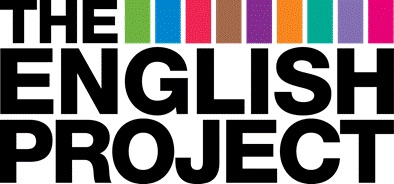3. The Colon
In the transition from classical manuscripts to monkish scriptures, a sign began to appear at the end of sections – an ivy leaf in the margin. The leaf was beside (‘para’ in Greek) the writing (‘grafos’ in Greek). That paragraph sign was an aid to the readers of the long, unrelieved strings of letters that made up Roman texts, but, then, there were developments in the Christian world that demanded greater help for readers than ivy leaves.
In the year 400, Saint Jerome produced the first complete translation of the Bible into Latin, and to ensure that the word of God was read aloud correctly, he encouraged those who copied his bible to adopt a practice used for the education of Roman schoolboys. Because an uninterrupted flow of letters was difficult for the boys to handle, Roman schoolmasters would break the letters into sections and subsections – ‘per cola et commata’ – into colons and commas. The meaning, the ‘sententia’, was to be divided into its limbs or members so that readers could make sense of what they were reading. (‘Colon’, meaning a punctuation mark, comes from a Greek word for limb. ‘Colon’ meaning a body part, comes from a Greek word for meat.)
From the time of Jerome, we have inherited a set of punctuation marks that have both helped and hindered readers. That is because a limited number of signs are asked to do a wide range of things. Individual signs have been used to mean different things for different readers with constant changes through the centuries. Moreover, that same set of changing signs has been used both to regulate breathing and to clarify meaning. The ancient colon and comma called for pauses of different lengths, and at the same time, they could be called to mark greater or lesser shifts of meaning.
Since the majority of reading today is silent, breathing regulation is less important than it once was, but it was most important in the chapter, choir and refectory of the old monasteries. In those places, readings were acts of religious life. Rather than being secular and patrician, monkish texts were sacred and universal. Their reading was not a matter of gentlemanly judgement. If Roman colons and commas were for schoolboys, Christian colons and commas were for monks.
For the monks of Italy, Spain and France, Latin was the language from which their Italian, Spanish and French had sprung, but within thirty years of Jerome’s producing a Latin bible that bible came to a land where the people had no knowledge of Latin. Jerome’s Bible arrived in Ireland about the year 430, and, as conversion proceeded, Gaelic-speaking monks struggled to master the sacred language of Rome. They needed all the help that Jerome’s ‘cola et commata’ could give them, but before they could make sense of the colons and commas, they needed to know where one word ended and another began. So it was in Hibernia that monks began to put the punctus and then to put a space, between the words of Holy Scripture.
In Pause and Effect, Malcolm Beckwith Parkes tells us that the Irish monks shared their practices with the monks of the kingdom of Northumbria. Those monks spoke a West Germanic dialect, a language quite as distant from Latin as was Gaelic. The Northumbrian monks learned their bible lessons well, and they prospered. In the seventh century, the great monasteries of Saint Peter at Monkwearmouth and Saint Paul at Jarrow developed a manuscript tradition so elegant, bold and rich that Northumbrian bibles were sought all over Western Europe, even in Rome itself.
One Northumbrian monk, Alcuin of York, became especially distinguished for his learning, and when, towards the end of the eighth century, King Charles the Great of the Franks came to re-organize his scriptorium at Aachen, he called upon Alcuin to take charge. English word spacing, small letters, head letters (minuscules and majuscules), and the judicious use of the comma, colon and stop spread through Western Europe.
The virtue of Alcuin’s punctuation was its simplicity. Primarily, it relied on spaces and dots. A dot over a word signalled a pause; a dot after a word signalled a balance of meanings; a dot under a word signalled the end of a thought. Those dots were the starting point of the modern comma, colon and full stop though the placing of Alcuin’s dots altered somewhat in the fifteenth century. Printers found it easier to keep the dots within the line of type, and so, after some experimentation, they arrived at our modern arrangement, putting a dot at the end of a sentence, adding a tail to a dot to mark a phrase, and putting one dot over another to do the job of the colon.
In earlier times, as a breathing sign, the colon’s position was a midway breathing, somewhere between the one-pause comma and the three-pause stop. The late intervention of the semicolon disturbed the balance between the ancient trio of comma, colon and stop. The semicolon introduced an oversubtle pause, giving the colon an ambiguous weight. A result is that, today, the colon is sometimes a stronger punctuation mark and sometimes a weaker punctuation mark than the semicolon. Semicolons subordinate to colons serve as commas; semicolons between sentences serve as full stops.
The colon was never only a breathing mark; it was from the beginning also an equals sign. It indicated an equivalence between meanings that it both separated and joined. That remains its main function: ‘He took the best route available: the back door.’ It serves a similar function in book titles where a colon is used to separate a main title from a subtitle: ‘Space Between Words: The Origins of Silent Reading’. However, before the twentieth century, printers were likely to separate main and subtitle by a semicolon. Today, American letter writers will use a colon after their salutation: ‘Dear Sir:’ while British letter writers will use a comma: ‘Dear Madam,’. British and American practice also varies with the punctuating of clock times: the American writes ’12:30’; the Briton writes ‘12.30’. But both nations express a ratio by way of a colon. They will say ‘ten to one’; they will write ‘10:1’.
By and large, the colon does not give writers too many problems, but the variation in its usage across recent centuries and between national groups demonstrates that punctuation is not an exact business. Nonetheless do note that the practised eye can tell your education, background and nationality from your use of the colon.
Next month, the English Project will tell the story of the comma.
Christopher Mulvey
Emeritus Professor of English at the University of Winchester



